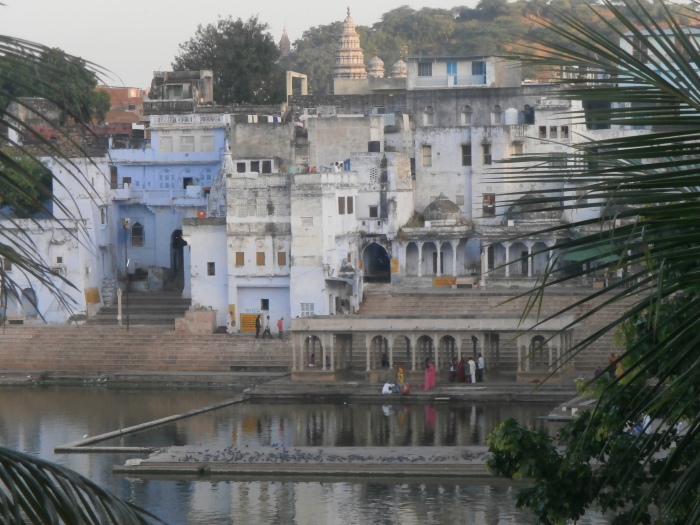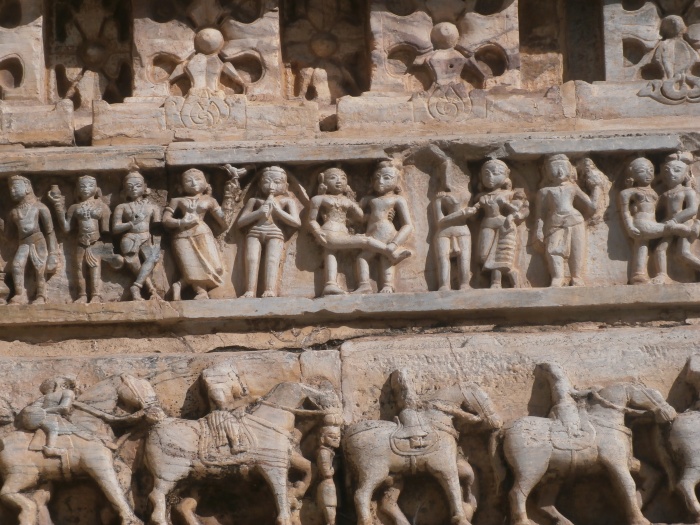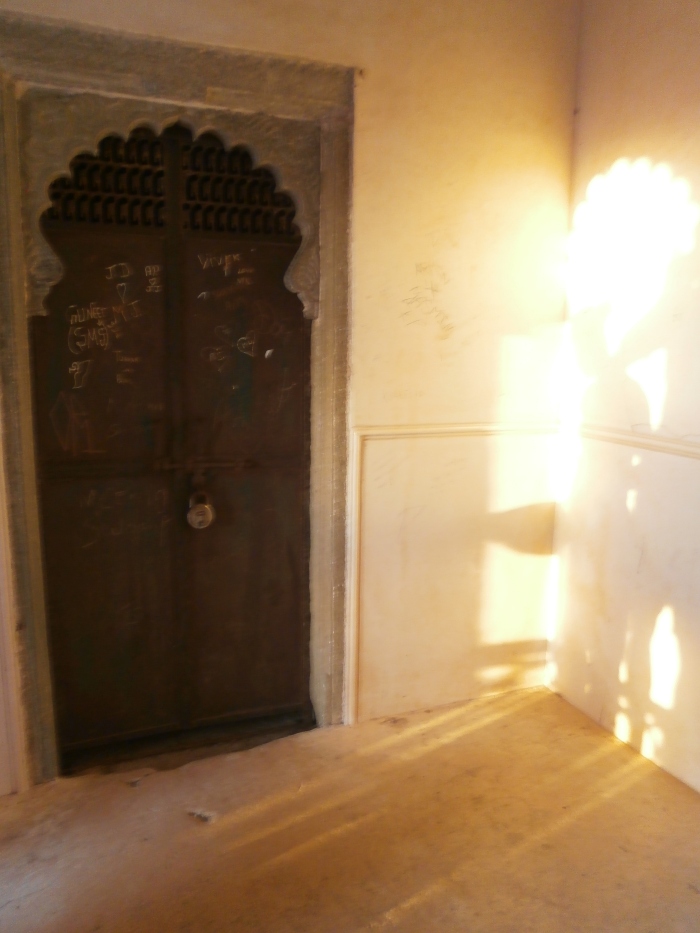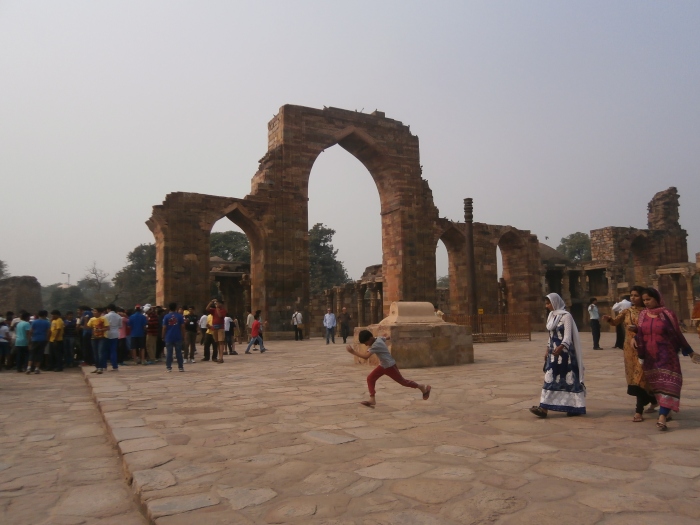At about the time we were on Brahma ghat in Pushkar, participating in the fire ceremony and receiving puja from a young Brahmin, the bodies of two local children were being pulled out of the sacred waters. Prakesh told us about it the next morning as we climbed into the car; they had sneaked away from their school group and tried to go for a swim in deep waters. “Sometimes, the children, they are just so naughty,” he said sadly. It was a reminder; in India there are no safety railings.
Our next stop was the jewel of Rajasthan, Udaipur, “the most romantic spot in India”. The city is arranged around the beautiful Lake Pichola and ringed by the reddish Aravalli Hills; several hotels, including the maharana’s former Summer Palace situated on a small island, were used in the filming of Octopussy, and about half of the city’s guesthouses, coffee shops and bars show the film every night. A six-hour drive in hot sunshine exhausted us, but led us to the Lake Pichola hotel, with its rooftop pool and cushioned divan area in our room, with stunning views of the lake. After a swim, an exploration of the central Lal Ghat, and a sleep, we felt braced to contemplate more sightseeing.
Hanif took us to the Jagdish Temple, a 450-year-old temple to Vishnu, where the intricately carved facade features erotic art. “You are not allowed to come here before you are married, but after you are married, the couples come here so they know what to do!” said Hanif, grinning. The day was a festival for women, we learned, and a group of women were seated on the floor in the temple, singing and beating a drum. All festivals and shrines for women, it appears, involve women asking for long lives for their husbands; women either don’t need long lives or are assumed to already have them. Later, we saw the majestic City Palace, decorated with mirrors, tiles, and coloured glass, with the intricate interweaving of public and private courtyards, women’s quarters and men, familiar to us from other palaces. At sunset, we asked Prakesh to drive us to the former Monsoon Palace, perched on top of a mountain about 10km from the city to give it some relief from monsoon temperatures. Although government-owned, it’s essentially abandoned, and sits in its beautiful isolated spot quietly disintegrating, although many people come up at sunset to see the views. We watched the reddish sun sink behind the hills before returning to the city for dinner by the lake.
In the narrow streets of Udaipur, I also came close to mastering the skills needed to walk around any Indian city; nerves of steel, a measured pace, and the determination to hold your line and trust everything else to weave around you. To paraphrase the Lonely Planet guide section on rules of the road, “Indians drive on the left… and that’s about it.” Even this modest assertion should probably be footnoted to the effect of, “Unless there’s a cow or a camel in the road, or an autorickshaw driver is particularly annoying you.”
Our last destination was Jodhpur, another six-hour drive followed by a whistle-stop tour of the Mehrangarh sandstone fort that towers above the city. Jodhpur is the ‘sun city’, the ‘blue city’ – Brahmins in the Old City painted their homes a vivid, glowing blue – and the ‘land of death’ – from the harsh arid climate, edging towards the desert that stretches into Pakistan. High up, the soil and the sandstone buildings have the same red-gold glow, occasionally contrasted by the white marble that Rajasthan is famous for, shipped in from further east. Another six hours of driving, a midday stop at a Jain temple, and a further 2.5 hours of sightseeing combined to give me a creeping headache, and a desire to retire to bed early. We’d run out of time for our our tour, although I badly wanted to make the further drive to Jaisalmer and the edge of the desert and watch the sands silt up the Jaisalmer Fort. The next morning, we reluctantly flew back to Delhi.
Having scored a significantly cheaper hotel deal in Gurgaon, a business suburb, we had a last day to take in some of South Delhi’s sights, principally the Qutb Minar. The minar itself is a 70-metre high tower, constructed in odd sections by an array of sultans and emperors, grounding the remains of a mighty mosque that was repeatedly altered and expanded by the array of rulers who conquered and reconquered Delhi. Some of the towers were never finished, the neat stucco finish stripped away, leaving only stumps of rubble, but the huge and intricate carved screen of the mosque still arches, in semi-ruined form, across it. It reminded me of nothing so much as the ruined city of the giants in C.S. Lewis’ The Silver Chair, and the inscription written across it:
Though under earth and throneless now I be,
Yet, while I lived, all earth was under me.
Leaving Delhi, my feelings were mixed. It had taken me some time to get the hang of the country, to manage the feelings of overwhelm, dislocation and anxiety it brought up. But the more our tour progressed, the more I loved the beauty and colour, and started to feel that I could find it addictive. We saw so little, really – not even all of one province – and the list of places that I still wanted to see grew ever longer – Sikkim, Amritsar, Lucknow, Hyderabad, Chennai, Darjeeling, Orissa, Ladakh… In five full weeks on the Indian subcontinent, I had also managed not to get sick, groped, or scammed. At the same time, the heat and the pressure of eyes had worn me down simultaneously. At Qutb Minar I was swarmed by several dozen schoolchildren who wanted endless photos, and although I smiled as graciously as possible, being a minor tourist attraction was exhausting. My experience of riding the Delhi Metro was somewhat similar; invariably the carriage contained at least 90% men who felt free to stare while I did my best to maintain composure and radiate confidence.
My lasting images of India were of life on the streets as we rolled through towns; entrepreneurs with a chair and a sheet of tin shaving their customers in the shelter of underpasses, street food sellers and water-trolley vendors, whole families living under tarps just yards from where, bizarrely, giant plush pink bears are for sale. We ended the trip by taking the red-eye from Delhi to Hong Kong for a family wedding, and I watched the sleek neon skyscrapers of Honkers roll by, half-delirious from a sleepless night, unable to take in the scale of the contrast.



